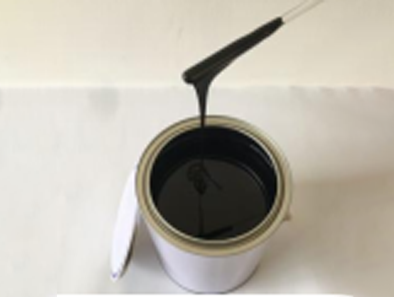Deep integration of industry, academia and research, tackling aerospace adhesives
2025-04-16 10:18
Behind the C919 aircraft soaring into the sky and the Long March rocket lifting a satellite into orbit, there is a type of "invisible" material quietly rewriting history - aerospace adhesives. This type of material needs to withstand extreme conditions such as -196 ℃ liquid oxygen environment, 380 ℃ aerodynamic thermal shock, strong radiation, high vacuum, etc. Its performance directly determines the structural safety of the aircraft. Over the past decade, China's dependence on high-end aerospace adhesive imports has exceeded 90%, and it has long been monopolized by American and Japanese companies. Now, through the collaborative innovation between Meixinlong Technology (Co., Ltd.) and China Academy of Aeronautics and Astronautics, domestic adhesives are achieving a leap from catching up to leading.

Technological breakthrough, from molecular design to technological revolution
Temperature resistant system reconstruction: Traditional epoxy resin adhesives degrade severely above 200 ℃. The joint team innovatively introduced phenylacetylene terminated polyimide prepolymers, which enhance molecular chain rigidity and regulate crosslinking density, resulting in a glass transition temperature (Tg) exceeding 400 ℃ (DSC measurement) and a shear strength of 22MPa at 380 ℃ (refer to GJB 2948A-2018 standard).
Space environment adaptability: In response to the problem of atomic oxygen erosion in space, the Institute of Chemistry of the Chinese Academy of Sciences has pioneered the "gradient ceramicization" technology, which generates a nano alumina protective layer on the surface of the adhesive layer. Through satellite borne experiments, it has been verified that the vacuum weight loss rate is less than 0.05%/year, which is three times better than imported products.
Intelligent curing control: Developed microwave thermal dual curing equipment to compress the curing temperature difference of the 25mm thick adhesive layer from the traditional process of ± 15 ℃ to ± 2 ℃, reducing internal stress by 70%, and successfully applied it to the overall molding of 5-meter composite material wings.
Localization substitution, from laboratory to sky
Sealing of Rocket Engine: A certain type of hydrogen oxygen engine uses self-developed low-temperature adhesive. After soaking in -253 ℃ liquid hydrogen for 48 hours, the sealing pressure retention rate is 99.3%, which helps with the Long March 5 launch mission.
Lightweight bonding of satellites: Low density (0.8g/cm ³) honeycomb core adhesive is applied to Fengyun-4 satellite, reducing weight by 15% while passing the 10 ^ 6 Gy dose test for radiation resistance.
Civil aircraft composite material repair: Developed room temperature rapid curing patch adhesive to repair carbon fiber skin damage in 2 hours, obtained COMAC process certification, and reduced repair costs by 60%.
Innovation Ecology: How Industry University Research can break down barriers
Demand-oriented mechanism: Aerospace Science and Technology Group proposed the demand for "instant 2000 ℃ thermal shock resistant adhesive", and the enterprise Beihang team overcame the ceramic/organic silicon hybrid system in 18 months, reducing the ablation rate to 0.08mm/s.
Resource sharing platform: jointly building the largest space environment simulation cabin in Asia, with an enterprise investment of 120 million yuan, universities providing testing methods, and research institutes outputting failure databases.
Talent revolving door system: Engineers go to Harbin Institute of Technology to conduct postdoctoral research, professor teams stay in the factory to tackle pilot projects and transform them, and 23 PhDs jointly trained become technical backbone.
With the rapid development of reusable spacecraft and deep space probes, adhesives need to continue to break through in three major directions
Extreme performance: able to withstand ultra-high speed aerodynamic heat flow at 5000 ℃
Intelligent response: self sensing cracks and releasing repair microcapsules
Adaptation to lunar environment: Anti moon dust electrostatic adsorption and 300 ℃ day night temperature difference
From molecular equations in the laboratory to practical tests in rocket exhaust, the deep integration of industry, academia, and research is turning "impossible" into a "Chinese solution". Every breakthrough on this innovation chain is rewriting the global high-end adhesive industry map.
Next:
Contact Us
EMAIL: adayang@resinsealant.com
WhatsApp : +86-15910569196
Address : No. 5A, Zhongnan Hi-Tech, No. 588, Deng Yun Street, Tangxi Town, Jinhua City, Zhejiang Province, China







